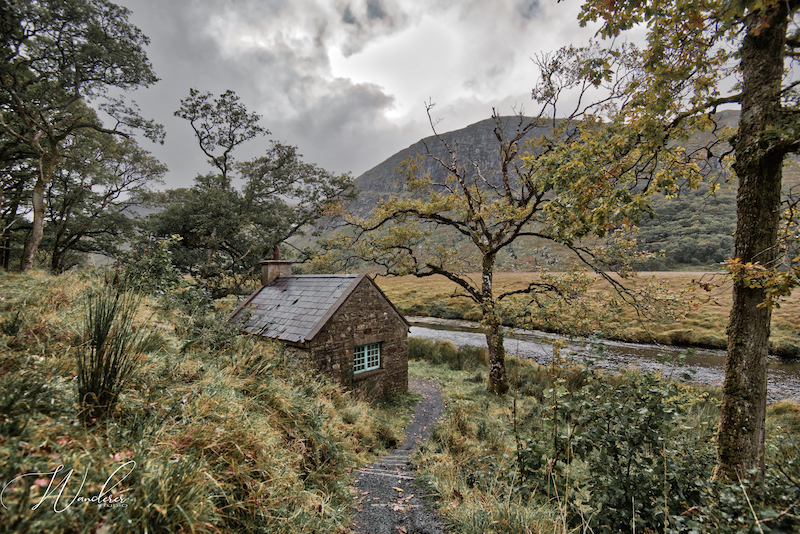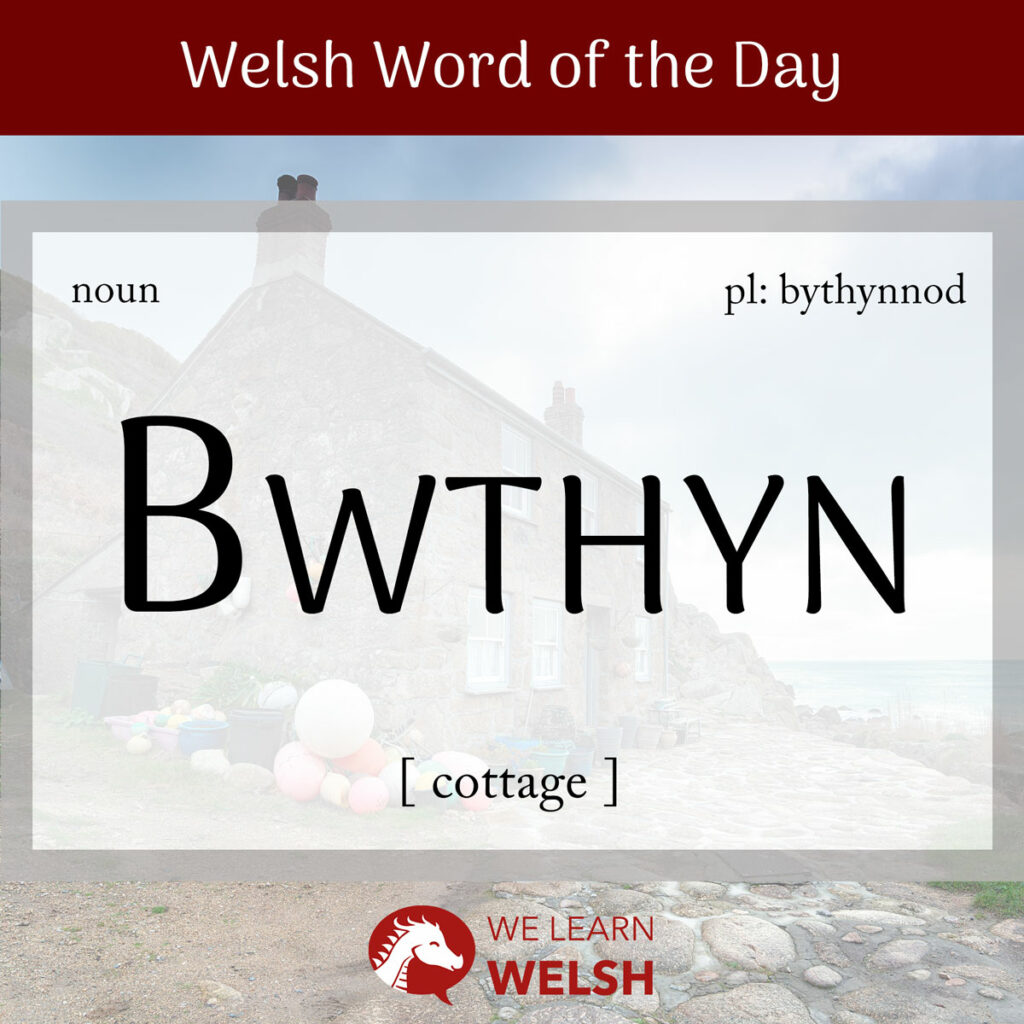There’s many a cute little bwthyn (cottage) to be found in Wales, whether it’s the colourful houses of the seaside town Aberaeron, or the gorgeous half-timbered farm buildings that can be spotted throughout Mid- and North Wales. The plural of bwthyn is bythynnod.
bwthyn
cottage
Bwthyn originates from the older word bwth (hut), combined with the diminutive suffix -yn, which gives it a sense of something small and charming. The word bwth itself is likely a borrowing from the English booth.
Interestingly, bwthyn is one of the very few Welsh words that has been borrowed back into English, similar to its etymological cousin, the Scots bothy. Bwthyn may be used by English speakers to describe a small traditional Welsh cottage in the same way that bothy is used to describe a Scottish or Irish cottage.
In particular, it’s used semi-regularly to market llety (accommodation) in rural or seaside Wales, likely because of its quaint connotations – you can find plenty of tai gwyliau (holiday homes) called Y Bwthyn (The Cottage) available to book on sites online!
You might have noticed in that phrase that bwthyn doesn’t mutate after the definite article y (the). This is because it’s a masculine noun. When it does mutate, it can become either fwthyn or mwthyn, like so:
Soft mutation
fwthyn
Nasal mutation
mwthyn
Aspirate mutation
N/A
An example in which you would actually have to use a mutation would be my cottage, which would translate to fy mwthyn.

There isn’t much saernïaeth (architecture) in Wales today that predates the 1300s. Historians believe this could be due to adeiladau (buildings) being destroyed in the aftermath of Owain Glyndŵr’s nationalist revolt.
Glyndŵr’s house itself is one of the oldest Welsh houses that we do have a description of, preserved by bard Iolo Goch in his poem Llys Owain Glyndŵr (Owain Glyndŵr’s Court). Iolo Goch describes a huge ffos (moat), impressive stone tyrau (towers), and a neuadd (hall) comparable even to Westminster Abbey. Not much of a bwthyn, then!
One of the most recurring features in older Welsh architecture, whether it’s homely bythynnod or noble estates, is fframwaith coed (timber-framing), particularly in North, Central, and South-East Wales. In some areas in the North these houses are common in trefi (towns), but yn y gefnwlad (in the countryside), tai (houses) and bythynnod made of carreg (stone) are more prevalent.
Sadly, modern penseiri (architects) have often altered or replaced these older structures. In Montgomery, for example, the original timber houses are now hidden behind wynebau bricsen (brick facades) added in the late 17th century.
Dw i’n byw mewn bwthyn bach twt.
I live in a dainty little cottage.
Another Welsh word for cottage is tyddyn, although this is much less common, and refers more properly to a homestead or smallholding. Tyddyn comes from the combination of tŷ (house) and dynn, an archaic word meaning hill.
There are plenty of other kinds of small houses, like a caban (cabin or hut), cwt (hut), hafoty (chalet), twlcyn (hovel), cwtsh (little hut, also means cuddle), or a bynglo / tŷ unllawr (bungalow). On the opposite end of the spectrum, an ehangle refers to a large, rambling house. However, a bwthyn sounds to me like the nicest of these to byw mewn (live in).
Other things you might want to do with a bwthyn include adnewyddu (renovating), peintio a phapuro (redecorating—literally painting and papering), and harddu (decorating/beautifying). While you can certainly talk about adeiladu bwthyn (building a cottage), it’s worth noting that the verb codi (to raise or lift) is often used in this context instead.
Maen nhw’n codi bythynnod newydd yn Rhaeadr.
They are building new cottages in Rhayader.
Interestingly, you can translate almost identically the English phrase cottage hospital, meaning a very small rural hospital, and have it convey the same meaning: ysbyty bwth.
The origins of many of Wales’ tiniest bythynnod can be traced back to the tradition of the tŷ unnos (one-night house), also known as hafod unnos. According to popular belief, if a person or family could gather materials and construct a house on common land within the span of a single night, that house would legally become their eiddo (property).
There are plenty of very small houses in Wales (and some in England) that are likely to have been constructed as tai unnos (one-night houses), such as the famous Tŷ Hyll (Ugly House) in Snowdonia. It was often said that the test of validity was whether a fire could be burning in the new bwthyn’s aelwyd (hearth) by the next morning.
Somewhat sadly, there is no evidence to corroborate that such a practice was ever a reflection of actual law. It more likely evolved from poor families attempting to legitimise their squatting practices, with the belief that it was legally justified being simple wishful thinking.

